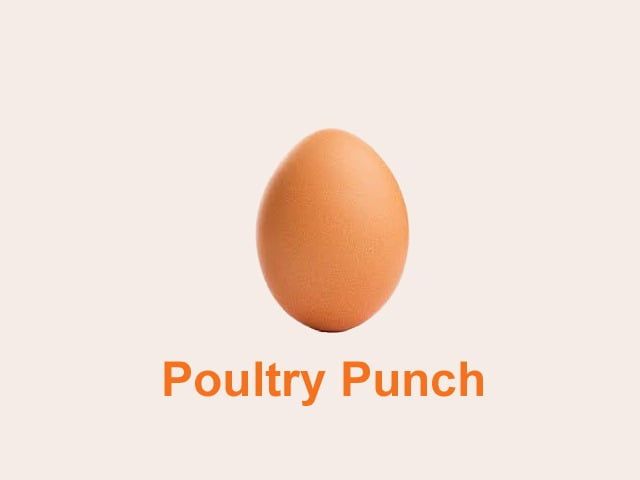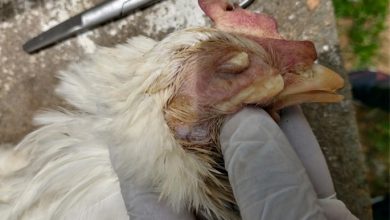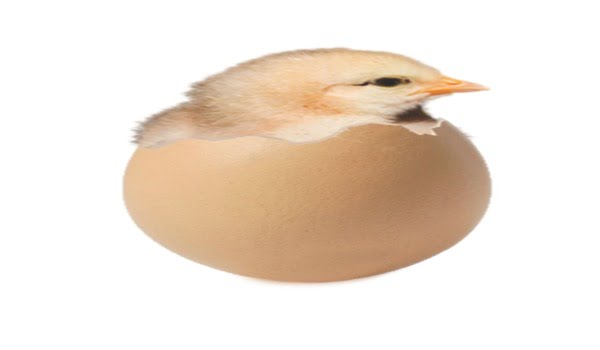QUALITY CONTROL RATION FOR POULTRY

Neetu Sonkar1*, Nishma Singh2, Rupal Pathak2, Lok Prakash Verma3, Anupam Soni1 and Sudheer Bhagat1 Manisha Verma4 and Ritu5
1,2,3,4College of Veterinary Science and A.H., CGKV, Anjora, Durg (C.G.), India
3GBPUAT, Pantnagar, Uttarakhand, India
5National Dairy Research Institute, Karnal, India
Introduction:
• Quality control term is defined as monitoring of commodity quality so as to maintain high standards at different levels from production to its utilization.
• Quality control of feed stuff can play a vital role in the development of feed manufacturing industry and also for maximum exploitation of the production efficiency.
• It is essential at all stages in the production compound feed so that animals could get wholesome balanced and nutritious feed.
Importance of quality control of feed ingredients and finished feeds:
The quality control of feed ingredients and finished feed are:
1. Agronomic practices
2. Processing of raw materials,
3. Storage conditions
4. Anti-nutritional factors
5. Variation in composition
6. Purchase considerations
7. Certificate of analysis
8. Computation of feed formulations and adulteration
Organizations and Acts:
The Quality control of feed is regulated by the legislation;
The Bureau of: Indian standards (BIS), New Delhi. BIS is a statutory institution established under the BIS Act, 1986 to promote harmonious development of the activities of standardization, marketing and quality certification of goods and attending to connected matters in the country.
Objectives of the animal feeds society committee
1. To Describe the feeds accurately
2. To lay down standards on feed ingredients
3. To lay down standards for compounded feed formulations and mineral mixtures for cattle, poultry, pigs, laboratory animals etc.
Implementation of quality control programme, requires knowledge of various feed ingredients and their processing methods, effective inspections, sampling of commodity, training personnel, instructions to quality control personnel, ingredient standards, laboratory procedures, consistency of the feed ingredient quality and reliability of materials supply.
Quality control of raw materials:
Feed ingredients are suitable for inclusion in the compounded feeds and also to indicate the maximum proportions in which they can be included.
1. Preliminary inspection of raw materials
2. Chemical tests
3. Toxicological tests
4. Analytical procedures
5. Quick and spot test
1. Preliminary inspection of raw material
Physical inspection are their;
1 Colour
2 , odour, texture , density of the materials
3 Evidence of wetting
4 Storage pests
5 Evidence of damaged or broken kernels etc
6 Presence of adulterants’ :such as stones ;dirt or other foreign materials
7 Evidence of presence of rat faecal pellets or hair etc
8 Moisture should not be more than 10%
2. Chemical tests: This indicates possible constraints on usage due to the presence of excessive content of crude fiber, fat or total ash. Additional tests should be carried out on materials with high ash content, to-determine acid insoluble ash.
Amount of acid insoluble ash = amount of sand and dirt present
3. Toxicological tests: Some ingredient contain endogenous toxic substance which may at low concentration adversely affect feed aversion and palatability any at higher concentration, even result in the -death of the animals.
eg. Gossypol in cotton seed
Glucosinolates in rape seed
Cyanogenetic glycosides linseed and cassava
Mycotoxins (Aflatoxins) in maize, groundnut cake etc.
4. Analytical procedures: Standardisation of analytical methods is required. The procedures of carrying out feed analysis are available from AOAC (association of official analytical chemists ), AACC (American association of cereal chemists) and BIS (Bureau Indian standards)
5. Quick and spot test: many times the quick decision in assessing the quality is required. These tests are mainly to identify the contaminants/ adulterants toxins etc.
Eg- Allergens, oxalates, fiber, mannans, biogenic animals, cyclopropenoid fatty acid, lipoxygenase, lectins, saponins, pectins.
Possible adulterants in commonly used feed ingredients:
| INGREDIENT | POSSIBLE ADULTERABTS |
| Maize | Cobs, cob , sand |
| Jowar | Sand |
| Soybean meal | Hull |
| GNC | Urea |
| Rice bran | Sand, husk , fiber saw dust |
| Calcite | Sand, magnesium |
| DCP | Calcite powder, rock, phosphate |
| Mineral Mix | Sand, cheap, minerals |
| Meat & bone meal | Sand, leather meal, blood meal |
Physical Evaluation
Physical evaluation is easy but rough in nature. One must be highly trained to identify the changes in the nature of the raw material/feeds. The physical evaluation includes examining the colour, taste, smell, sound and touch.
Colour: Change in the normal colour of the feed ingredients indicates the maturity state of the grain, storage conditions, presence of toxins, and contamination due to sand, possible use of insecticides/fungicides which gives dull and dusty appearance. Black coloured fish meal indicates the rancidity of fish oil. Dark brown colour of meat meal indicates over cooking.
Size: Size of the grains governs its energy and protein due to proportional decrease/ increase in seed and its coat. Smaller the grain lower will be the nutrient contents due to more proportion of seed/grain coat. To evaluate the weight of cereals about 100grains or fixed volume is taken. Higher weight indicates a higher ME value. This technique is called Test Weight.
Homogeneity: Presence of contaminants like other grains, broken grains, husks, weed seeds, infested seeds is viewed. In the oil seed cakes, closer observation will reveal the presence of fibrous material like hulls in de-oiled groundnut cake, rice polish contaminated with husk. Presence of clumps in oilseed meals indicates inadequate cooling of the cake before packing. Clumps may contain fungal growth. Clumps in mineral ingredients are not suitable for premixing.
Smell: Standing near the stock immediately indicate any difference from the normal smell. Musty odour indicates the beginning of fungal contamination or boring insects. To detect rancidity in oil rich feed ingredients this is the best method. Odour of petroleum products is suggestive of excessive pesticide or fungicides. Leather smell of meat meal indicates adulteration with leather meal.
Taste: Each ingredient has a different taste; any change in the taste like bitterness in grains and oilseed cakes indicates the presence of mycotoxin. The level of salt can be detected by tasting. Bitter taste of rice polish indicates rancidity of fatty acids.
Touch: Feeling the raw material indicates dryness. Clumps can be found out by inserting the hand inside the bag. The clumps may be due to high moisture content, improper storage, packing of fresh warm solvent extracted meal that crumble on application of light pressure. Clumps formed due to excess moisture will be very hard.
Sound: Dry grains on pouring down or biting will produce sound of spilling coins, indicative of optimum moisture in grains. Common adulterants in feeds and fodders: The feed ingredients should be checked for possible adulterants (Table 1). Adulteration is defined as the admixture of a pure substance with some cheaper and low quality substance, done intentionally usually to make money. The common contaminant or adulterant is husk or sand. Winnowing is the best method to detect husk in the feedstuff. Sieving can be done to differentiate contaminants based on particle size. To detect for the presence of sand a weighed quantity of grain is soaked in water and then by sieving with hand, the grains can be separated. The remaining water is decanted and the settled sand is weighed to assess the level of contamination. Low CP and high CF in oil seed meals is indicative of adulteration with fibrous material. The high CF alone is indicative of adulteration with urea and or some inferior quality oil seed meals like mahua, castor or karanja cake. The amount of acid insoluble ash is a good guide to the amount of sand or other dirt which may be present. Determination of peroxide content and free fatty acid in oily materials is indicative of rancidity and duration of storage, respectively.
Common adulterants of different feed ingredients-
| Feed ingredients | Adulterant
|
| Groundnut cake | Groundnut husk, urea, non-edible oil cakes |
| Soybean meal | Urea, hulls, saw dust |
| Deoiled rice bran, wheat bran | Ground rice husk, saw dust |
| Fish meal | Common salt, urea, crustaceans, feather meal |
| Mineral mixture | Common salt, marble powder, sand, lime stone |
| Meat and bone meal | Sand, leather meal, blood meal, rock phosphate |
| Shell grit | Sand, dust |
| Molasses | Water Cobs, cob dust, sand |
| Rice broken | Marble, grit |
| Dicalcium phosphate | Calcite powder, rock phosphate
|
Most commonly used spot tests
Most commonly used spot tests
| Constituent | Test | Remark |
| Thiram (Pesticide in maize)
|
100g sample+ 50m1 chloroform shake (5min). Filter the contents with Whatman filter paper 1. Add few crystals of cuprous iodide to filtrate and shake | Filtered chloroform extract turns amber to brown colour with in 1 -2 min indicative of thiram |
| Mahua cake
|
In water extract of test feed add conc. H2SO4 | Violet or pink colour indicate the presence of Mahua cake |
| Linseed meal | Test feed is treated with 1-2 drops or more of dilute H2SO4 in microtest tube. The mouth of test tube is covered with a disk of filter paper moistened with a drop of reagent | Depending upon the amount of HCN produced a more or less intense blue colour appears |
| Common salt | To 1g sample, add 100m1 distill water, stir & filter. | White turbidity indicates presence of salts |
| Leather meal | Pick up brown to black particles from sample and place on Petridis, add 3-5 drops of ammonium molybdate, stand for 5-10min | No colour change |
| Fish meal quality (presence of NPN) | Put 2-3g of test sample in a 100m1 beaker and add 1 0-15m1 distill water stir. After 2-3 min, add 3-5 drops of test extract on white porcelain plate and add 2-3 drops of mercuric-potassium iodide alkaline solution | Heavy orange colour indicates presence. of NPN. intensity of orange colour of precipitate depend on, amount of NPN
|
| Decomposition test (animal and marine products) | 5g test sample in 250m1 flask. Prepare cork, to fit 2.25″ of filter paper strip pinned to bottom & moistened with saturated lead acetate. Add 50m1 dilute H2SO4 (5m1 acid + 45m1 distill water) & insert cork. Stand for 16hour. | Test paper darkens quickly, if sample is badly decomposed
|
| Hoof or horn | Place 2-3 particles of amber colour test sample into a evaporating dish, add 5m1 glacial acetic acid, stand for 60 min | Test particles if hard and tough –hoof and horn ,soft and swollen gelatin |
| Urease activity in soyabean meal
|
Spread the sample uniformly on petridish, glazed paper with white background. soybean meal Spray cresol red (0.1 % solution) and thymol blue (0.1% alcoholic solution) reagent mixture (80m1 cresol red, 20m1 glycerol/sorbitol, 2g urea and few drops of thymol blue) and examine for colour.
|
Inadequate heat treatment- particles turn red within a minute. Adequate heat treatment- Few particles (<10%) slowly develop red coloration. |
References-
AOAC,2000.offficial Methods of Analysis,Seventeenth Edition ,Gaithersburg, MD,USA,AOAC International.
AOAC,1995,Animal feed ,Chapter 4. offficial Methods of Analysis 16th edition (AOAC) International ,Arlington ,VI,USA,30pp.
Gerht ,A.J.and B.Poudstone ,(1976)Feed Manufacturing Technology ,10:253-256.
Jones ,F.T.( 1989), Korean J.Animal.13(1):25-39



